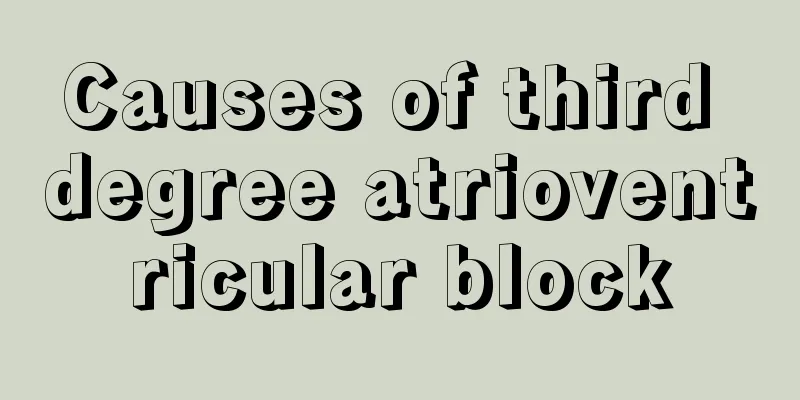Causes of third degree atrioventricular block

|
Third degree atrioventricular block is a relatively common heart disease, which can also be called complete atrioventricular block. Most patients are middle-aged and elderly people over 50 years old, and according to relevant statistics, the number of male patients is significantly higher than that of female patients. So, what is the cause of third degree atrioventricular block? Let me explain it to you below, I hope everyone can pay attention. Third degree atrioventricular block refers to complete atrioventricular dissociation caused by the inability of all impulses from the atria to be transmitted due to an abnormally reduced conduction ability of a certain part of the atrioventricular conduction system. It is common in patients with coronary heart disease, especially those over 50 years old. The incidence of complete atrioventricular block in acute myocardial infarction is 1.8% to 8%, and the Fuwai Hospital reported it to be 2.6%. The incidence of acute inferior wall myocardial infarction is 2 to 4 times higher than that of anterior wall myocardial infarction. It usually occurs 1 to 4 days after onset and can last from a few seconds to several days. If third-degree atrioventricular block occurs in the inferior wall, first-degree or second-degree type I atrioventricular block may occur before or when complete atrioventricular block is eliminated. If third-degree atrioventricular block occurs in the anterior wall, second-degree type II atrioventricular block or right bundle branch block may occur before or after the infarction. A few cases may present with complete atrioventricular block from the beginning of the infarction. Third degree atrioventricular block is a serious and dangerous arrhythmia that must be treated promptly and aggressively. On the one hand, we actively look for the cause and treat it accordingly, such as timely controlling various infectious diseases, correcting electrolyte disorders, treating primary diseases such as digitalis poisoning, myocarditis, and cardiomyopathy; on the other hand, we treat atrioventricular conduction block. The symptoms and hemodynamic changes of third-degree atrioventricular block depend on the degree of ventricular rate slowing and the myocardial lesions and functional status. During physical activity, you may experience palpitations, dizziness, fatigue, chest tightness, and shortness of breath. If the ventricular rate is too slow, especially when the heart has obvious ischemia or other lesions, or is complicated by extensive acute myocardial infarction or severe acute myocarditis, the symptoms may be severe, including heart failure or shock, or slow reaction or confusion due to insufficient blood supply to the brain, and then develop into syncope (the incidence rate can reach 60%) or Adams-Stokes syndrome. In fact, third degree atrioventricular block is not terrible as long as we have a positive attitude to face it. Today's medical technology is very advanced. This disease can be completely controlled as long as it is treated correctly. In addition, I would like to remind all patients and friends to undergo regular treatment. I wish you all a speedy recovery. |
<<: Tips on preventing diseases in spring
>>: What is primary amyloidosis
Recommend
What is the cause of teratoma recurrence
Teratomas are very common in young women under 30...
What's wrong with my head being heavy and having a headache
Generally speaking, when we suddenly have a heada...
What are the symptoms and causes of migraines?
As people's work pressure increases, more and...
What is the relationship between bone age and age?
In order to understand the bone condition of thei...
Can I take medicine for lymphoma when I am pregnant?
There are many anti-lymphoma drugs now, and strep...
How often should I wash my face with sulfur soap
Sulfur soap has bactericidal and anti-inflammator...
Measures to prevent air pollution
In order to develop the economy at an excessively...
What will happen if you smell too much mothballs
Camphor balls are an item that many people have u...
Differentiation between skin cancer and common skin diseases
Skin cancer is a relatively common malignant tumo...
Can nasopharyngeal carcinoma metastasize to the stomach?
Can nasopharyngeal cancer metastasize to the stom...
How long can patients with lung cancer brain metastasis live
For example, if breast cancer metastasizes to imp...
I have spotting and my stomach hurts a little and I want to defecate. What's going on?
Some pregnant women will have some special physic...
What food is good for acute gastritis
Gastritis is one of the most common diseases in o...
What are the signs of early brain glioma
Glioma is a disease that often occurs in the brai...
Can small cell lung cancer be cured?
What is the cure rate of small cell lung cancer? ...









